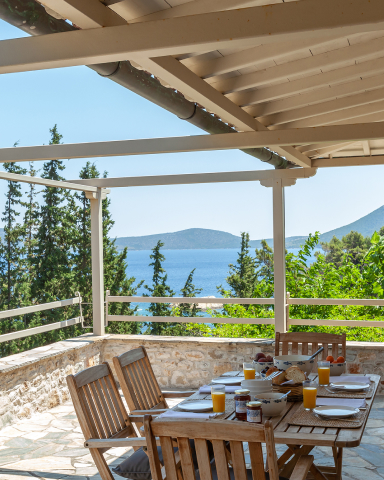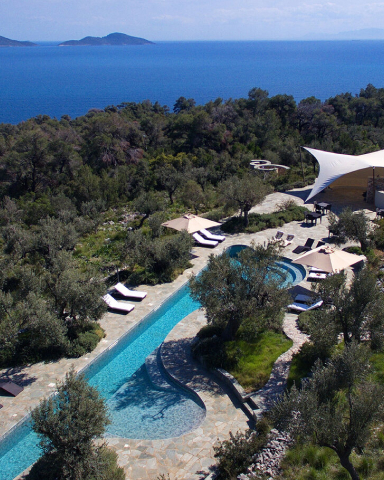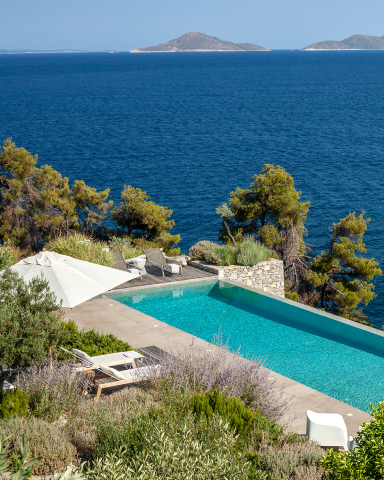Visiting Alonissos Marine Park

About Alonissos Marine Park
Officially established by Presidential Decree in 1992, the National Marine Park of Alonissos is the largest reserve of its kind in the Mediterranean. Covering about 2,250km2 of the Aegean, it comprises a group of seven main islands and is divided into three different areas, each of which have varying degrees of protection. The core, or most protected part, is the islet of Piperi.

Flora
The islands in the park are home to a wide range of flora, including pines, kermes and holm oaks, garrigue, strawberry trees, oxalis, Judas trees, orchids, wild sage and oregano, lentisk, Phoenician juniper, heather and much, much more. Even the seabed is a botanist’s delight, thanks to the presence of large fields of posidonia (sea grass) that sustain a diverse and fascinating array of marine life.

Mediterranean Monk Seals
Fauna
Fauna is equally abundant and varied. Swimmers, snorkelers, scuba divers and sailors can look forward to encounters with several species of dolphin, sperm whales, loggerhead turtles and over 300 species of fish, not to mention the park’s most important residents: Mediterranean monk seals. Back on land, meanwhile, ornithologists will be able to tick off up to 80 species of birds, including Eleonora's falcons, Mediterranean shearwaters, cormorants, Audouin's gulls and shags.
The seven islands
Base camp - Alonissos
Each of the seven main islands within the park has its own particular characteristics, charms and history. Alonissos, the largest and only inhabited island in the group, offers numerous beaches, great walking and several lovely villages to explore. The Marine Park’s scientific and administrative centre is based here as is a monk seal rescue centre.
The subaquatic archaeological site - Peristera
A narrow channel of water separates Alonissos from its nearest neighbour, Peristera. Archaeological digs here have found evidence of settlements dating back to Byzantine times, while remains of a shipwreck off its coast – now the site of an underwater archaeological site - have shed more light on historical trade routes in the area. Part of the Marine Park’s work involves safeguarding archaeological finds and documenting the area’s millennial history.
The blue lagoon - Skantzoura
About 13km southeast of Peristera is the island of Skantzoura, home to the remains of an ancient monastery. Its cliffs, and those of two neighbouring islets, provide an excellent breeding ground for a variety of birds, in particular Audouin's gulls. There are also a couple of lovely beaches, most notably the one at the end of a 400m inlet on the south coast, where the waters take on a vivid, electric blue hue.
The Monastery of Mount Athos - Kyra Panagia
Kyra Panagia, the site of a 17th century monastery, sit just 7km off Alonissos’s northern tip. Like several other of the minor islands in the Sporades, Kyra Panagia is the property of the Monastery of Megisti Lavra, whose monks bought it over 1,000 years ago as a place where they could grow food and make wine for their community and those of other monasteries on the flanks of Mount Athos. There are some delightful beaches including one on the north end of the island in Planitis bay, a wide inlet that is virtually closed to the sea.
Wild goat island - Gioura
Continuing in a northeasterly direction, we soon come to the island of Gioura, whose treeless hills and rugged cliffs make it rather unhospitable, except for an autochthonous species of wild goat that roams freely on the island. We do know, however, thanks to the discovery in 1992 of a large cave, that Gioura had been inhabited on and off for millennia. The so-called “Cyclops Cave” turned out to be a treasure trove for archaeologists, who found decorated vessels, flint blades, stone artefacts, animal bones, primitive jewellery, bone hooks, Roman-era lamps and part of a human skull thought to date back to around 9,000BC. The cave also appeals to geologists thanks to its numerous stalactites and stalagmites.
The epicentre - Piperi
About 13km to the east of Gioura is Piperi, the core of the park and the most protected island in the archipelago. It is entirely off limits to visitors and boats may not sail within a 3-mile radius of its coast. It is on Piperi, in its caves and along its beaches, that the monk seals live and breed. Conservationists estimate that there are only about 400-500 monk seals left, a sad fact that shows just how at risk of extinction the species is. High up above the sea, Piperi’s cliffs and pine woods provide a natural habitat for numerous species of birds, including a large number of Eleanora’s falcons.
A volcanic beginning - Psathoura
The last island of the Alonissos Marine Park archipelago is Psathoura, situated some 7km due north of Gioura. Psathoura stands out from its neighbours in many respects, not least in regard to its volcanic origins, its unique range of plants, many of which, such as sea daffodils, heather and sand lilies, are not found on the other islands, and its almost total flatness. The shallow waters that surround the island barely cover the archaeological remains of a village, presumably submerged by rising sea levels. Landmarks include one of the tallest lighthouses in the Aegean, built in 1895, and the idyllic sandy beach of Mandraki.

We're Villa Matchmakers
Because our local experts have personally visited each of our destinations, we know exactly what makes them special. Tell us what your ultimate villa holiday looks like, and allow us take care of the rest.


